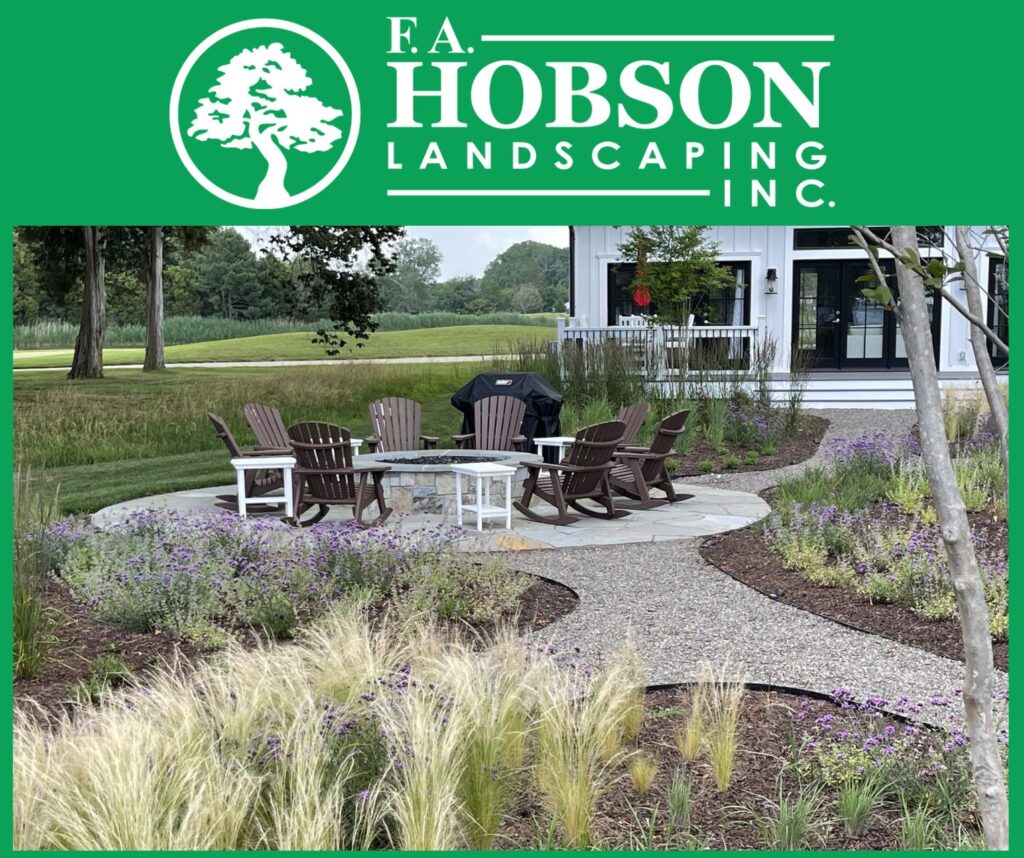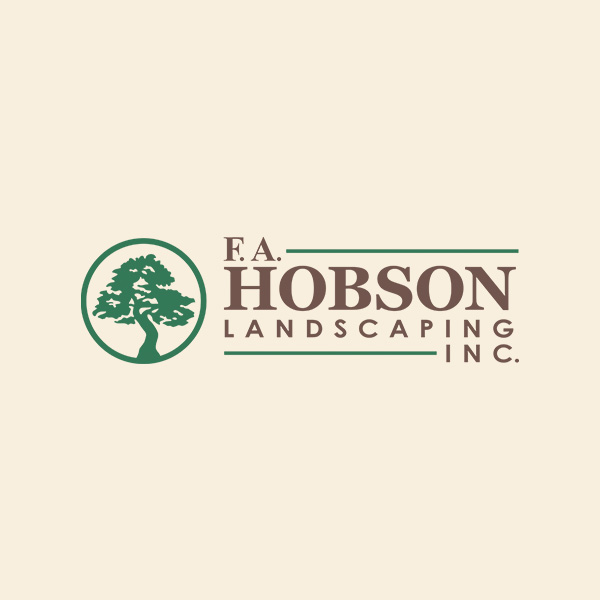Here are a few tips on prevention from F. A. Hobson Landscaping – The only area landscape design & build company with it’s own nursery!
The key to preventing damage is to predict circumstances that could result in tree damage and take action to correct potential problems before storms strike. Look at the form of the tree, any decay that may be present (and the extent of the decay, if present), maintenance practices involving the tree, the presence of stem girdling roots, and existing site problems. There may be other predictable situations present, but these factors are the most common.
Form: Trees may suffer from several natural form imperfections that lead to damage under storm conditions. Inclusion of bark at branch unions is a common weak point in trees. Branch unions should have a rough, protruding branch bark ridge where the branches meet. Without this proper union, branches or leaders have a tendency to separate during storm situations. Trees may also have codominant leaders. This occurs when a tree has two or more branches or stems that are trying to become the centerpoint of the tree. Codominant leaders typically exhibit inclusion at their unions. Some species that are notorious for having included branch unions and codominant leaders are:
Green ash, Willows, Red maple, Amur cherry, and the very plentiful Silver maple.
Maintenance: Poor maintenance practices may encourage decay anywhere in the tree. Mechanical damage, including wounds from lawnmowers/grass trimmers, and poor pruning practices, often leads to decay. Piling mulch several inches against the stem may lead to stem girdling roots and other dysfunctional root systems. Incorrect irrigation can over-saturate a soil and can encourage shallow root systems, stem girdling roots, and unstable trees. Improper use of staking equipment (wires around stems) often girdle and weaken stems.
Poor pruning practices that encourage decay or the formation of weak branches include: flush cutting (pruning too close to the lead branch or trunk), leaving long stubs, “topping trees,” or stripping bark when pruning. Trees should have between 4′-6′ of coarse mulch, none of which is resting against the trunk of the tree. Staking equipment that is not properly installed or is left attached to the tree too long will damage stem tissue and encourage decay. Never attach staking wires or ropes to tree stems. Use wide, padding materials around the tree stem and connect these materials to the tree wires or ropes. There are several types of padding available at many garden centers or hardware stores, but strips of carpeting, old belts, or inner tubes also work well. No staking or guying materials should be left on a tree for more than 1 year without inspection and adjustment for increased stem growth.
To prevent damage to your property you should check key trees regularly. When minor damage occurs, correction (such as pruning or wound “painting” on oaks during oak wilt season) may prevent it from causing extensive damage throughout the tree. If extensive damage has occurred, immediate corrective action should be applied to prevent further damage.
Proper Pruning: Pruning either corrects problems or creates them. If pruning is done improperly, it can create places for decay to enter and the wound will only increase in extent. Done correctly, pruning wounds should close over naturally, keeping decay from starting and expanding in the wound area. A general rule for pruning wounds: the smaller, the better.
Protection From Mechanical Wounding: Mulching, planting trees in landscaped beds, and even staking can give trees the necessary protection from mechanical injury. Wounds caused from lawnmowers and grass trimmers can promote areas of decay in the tree. Cars, snowplows, staples, and any stacked materials that wound stems and branches can cause long-term damage in a short time.
Call F. A. Hobson Landscaping and let us design and build a yard that will be beautiful and secure. We have a skilled team of horticulturalist and landscape construction experts with the necessary skills and experience to carry out all major projects. We are happy to answer any questions you may have. 410-739-6800




